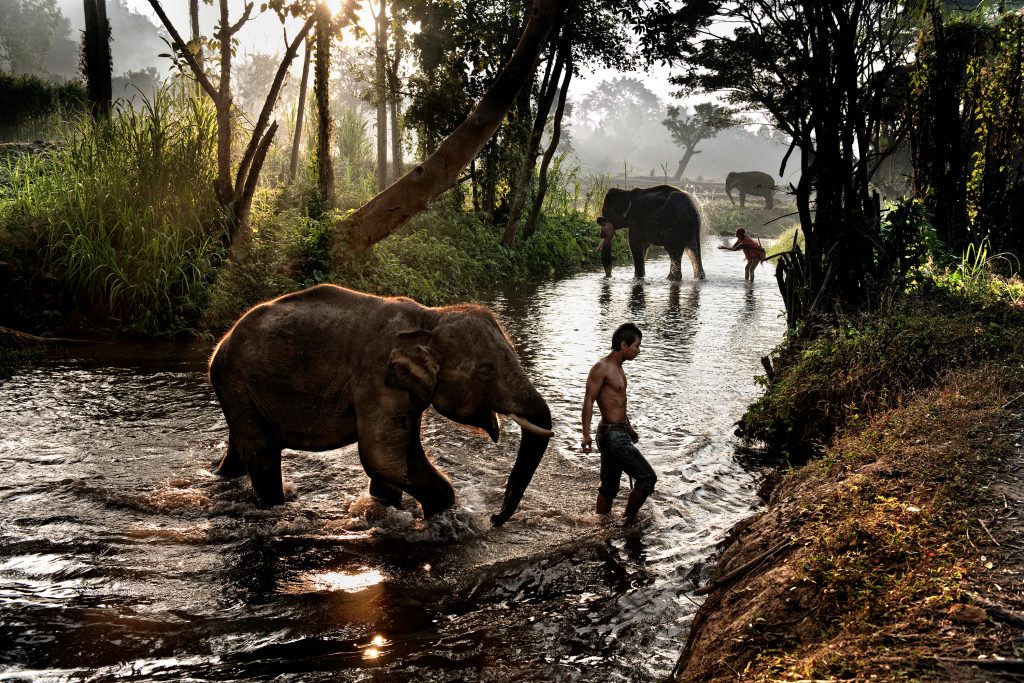
Elephants and their mahouts at a rescue sanctuary in Chiang Mai, Thailand. Each mahout dedicates his life to caring for the needs of a single animal. Picture: © STEVE MCCURRY from ‘Devotion’
It’s almost 10 years since I launched Deskbound Traveller (officially on December 6, 2013, though I’d been posting on the site for a couple of months before that). The name was both an expression of a firm belief, in the transporting power of words, and something of a joke against myself. At the time, I was running print coverage on the travel desk of a national newspaper. Having joined that desk to edit and write, I’d found myself working under a system where I had trouble sometimes escaping for long enough for a sandwich, let alone to get out on the road.
I quit that job, went back to working freelance, and spent a few years pinballing around the world, scribbling about places from Welsh Patagonia to Siberia. In 2019, when I gave up flying for work because of the cumulative depth of my carbon footprint, my plan was to carry on travelling, but doing it more slowly, shorter-haul, taking boats and trains. Then came the pandemic.
From the spring of 2020, Deskbound Traveller, and the writing I encounter and promote through it, helped to lift me out of lockdown. In one month alone, I went to Istanbul and the Balkans, to the Ukraine and St Petersburg, and into the Black Hills of South Dakota. All thanks to what DH Lawrence, in Mornings in Mexico, summed up as “one little individual, looking at a bit of sky and trees, then… making little marks on paper”. The body might not have been crossing oceans, but the mind was roaming free, and a few hundred pages between covers could take it an awfully long way.

This year, one of the books I enjoyed most was Glowing Still (Abacus, £22), in which Sara Wheeler looks back on her formative years, her life on the road and her “more or less random travels over four decades and seven continents”. The climate crisis, viruses and the argument that stories of place should be voiced by locals have all endangered travel writing, she says, but she herself remains loyal to its famously elastic form. There’s no danger of her turning to novels. When she took night classes in Feminist Theory in Camden Town, London, they were at the Working Men’s College — “you can see why I don’t write fiction. I don’t have to make it up.”
For Mud and Stars, her last book, Wheeler travelled through Russia in the company of writers of the Golden Age, from Pushkin to Tolstoy. But her first trip there — her first trip abroad — was at the age of 10, when she was taken by her parents on a package holiday to Moscow, found herself sharing the same hotel as the Northern Ireland football team, and was snapped by a newspaper photographer in the company of George Best. She says that it was her parochial upbringing in Bristol, in a family of blue-collar Tories, that made her light out for the rest of the world, and turned her into one of those “liberal twits”.
Glowing Still is a book about being a woman in what was seen as a man’s trade (“the blokeish business of seeing how dead you can get”); a book of both personal and social history that draws in feminism, environmentalism and literary criticism as well as travel. It’s funny, too. The question she’s most often asked, she says, is whether anything has scared her. The answer: “The John Lewis curtain department terrifies me most.”
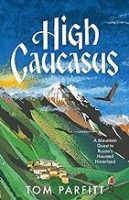
Wheeler was among writers who endorsed High Caucasus by Tom Parfitt (Headline, £25) in advance of its publication. I was hugely impressed by it, too. Before he set off in 2008 to walk a thousand miles from the Black Sea to the Caspian, through the mountainous and mainly-Muslim North Caucasus, Parfitt read the advice of the UK Foreign Office. It told him to avoid six of the eight regions he wanted to visit — because of a high risk of armed conflict, terrorism and kidnapping.
But then he knew the dangers better than most. Four years earlier, as a correspondent in Moscow, he’d been dispatched to Beslan, in North Ossetia, where Chechen and Ingush militants had stormed a school and taken more than 1,000 people captive. He witnessed the bloody end, in which 314 hostages died, more than half of them children. Ever since, he’d been haunted by the memory of seeing a mother, on learning that her child had been killed, crumple to the ground in front of him.
Parfitt, who had felt the restorative power of mountain air in the Cairngorms, Canada and the Balkans, hoped to dilute the memories of Beslan, but he also wanted to learn what had given rise to the siege there, and how the region as a whole had become synonymous with violence.
It was a courageous trek, and his self-effacing account of it is an important one. Just as Russia sought to justify its invasion last year by framing Ukrainians as fascists, so it has portrayed North Caucasians as primitives in need of civilising. The truth, Parfitt found, was very different: “Yes, there were locals with blood on their hands… But it was a merciless, blundering state that had caused much of the mayhem.”
He traversed the political, religious and ethnic fault-lines of seven Russian republics, learning of daily life from shepherds and soldiers, priests and partisans. En route, he was arrested several times, revisited Beslan and was drawn again into war reporting when Georgia launched an attack to reclaim its breakaway republic of South Ossetia. In Dagestan, he jokes, it was the generous hospitality of the locals, rather than militants, who posed the greatest danger to his health.
The exhilaration he felt while tramping through the mountains, he says, served “as a kind of affirmation that another Caucasus existed”. The same can be said of his book.
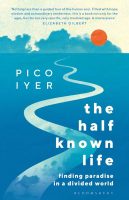
After half a century of travel, which has taken him to some of the holiest places, Pico Iyer asks in The Half Known Life (Bloomsbury Circus, £16.99) what kind of paradise can be found “in a world of unceasing conflict”. I’d expected Iran — the culture that gave us the term “Paradaijah” — to feature, along with Jerusalem, India, Tibet and Japan (where he himself now lives and where he has made 10 trips in a dozen years at the side of the Dalai Lama). But not Broome, in northern Australia (“the loneliest regional capital in the world”) or Belfast, whose streets he says he’d been walking through in his head for 30 years in the lyrics of that “snarling Transcendental singer” Van Morrison. Morrison, he says, “hadn’t so much been fleeing the difficult circumstances of his life so much as working to find in them the lost pearl of something better”.
In The Half Known Life, a blend of travel and memoir, Iyer is intent on persuading us that we can all find that lost pearl. It’s a book of lightly-worn learning, wise and compelling.

Van Morrison’s “Into the Mystic” came into my head as I sought to sum up Kapka Kassabova’s latest travels for Elixir (Jonathan Cape, £20), a book in which she tells how a medical herbalist, seeing her for the first time, was able to say (rightly) that she had thyroid and kidney problems and a cholesterol level of 5.
Kassabova — born in Bulgaria, raised in New Zealand and resident for over a decade in Scotland — is a citizen of the world, but she keeps being drawn back to the southern Balkans. Elixir could be seen as the third in a trilogy, following the prize-winners Border and To the Lake. Horrified by recent developments in the Highlands on the edge of the Beauly, and the damage done by quarrying, power generation and logging, she heads for the basin of another river, the Mesta, “a place where everything was still connected — peaks, people, plants”, to spend time in the company of foragers, healers and mystics. Borders on the ground and their enforcement feature again — the basin is shared by Bulgaria and Greece — but Elixir is also about the barriers we have built between botany and medicine, between alchemy and science, and between ourselves and our surroundings. It’s a call to topple them while we still have time.
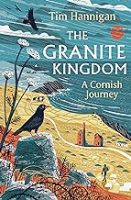
In a previous incarnation, Tim Hannigan was a chef, feeding the tourists who flock to Cornwall in summer. Now he’s a writer and academic, inquiring, among other things, into the stories tourists are fed about place. In The Granite Kingdom (Head of Zeus, £27.99), he turns his attention to his home turf, exploring its landscapes and history, and how notions about this land in the far west — “a kind of halfway house between English county and Celtic nation”, as the historian Bernard Deacon put it — have been shaped by writers, artists and others. I found mine being reshaped as I read his book; a book, you might say, that he was born to write.
In autumn 2020, the swifts left for Africa, leaving Simon Barnes behind. The Covid pandemic had ruled out his plan to lead a safari in Zambia. So he set himself a challenge: to sit in a folding chair in the same spot in his garden for several hours every day, whatever the weather, and “celebrate the ordinary and the daily”.
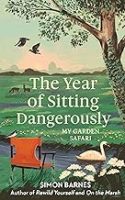
That garden, admittedly, is bigger and more attractive to wildlife than many: on the edge of the Norfolk Broads, “with horses in the meadow and otters and kingfishers on the marsh”. Still, The Year of Sitting Dangerously (Simon and Schuster, £16.99) is a powerful reminder that you can be transported, without plane or train or boat, by looking at the local with fresh eyes. Barnes learns a new appreciation for the flight of herons; for the sound of the wings of a wood pigeon.
You’re reminded, here and there, that he’s written about sport as well as wildlife. A hoverfly, he notes, can move “from stationary hover to to rapid and unpredictable flight in an instant… a purposefully deceptive shift like a winger bursting into the penalty area”. He himself, rising from his seat, avoids treading in an enormous swan’s turd by making “a neat Ronaldo stepover”. As nimble on his feet, clearly, as he is on the page.
PICTURE BOOKS
Devotion by Steve McCurry (Prestel, £50)
The glorious cover, showing monks by a golden cliff-edge rock in Myanmar, has been widely reproduced, and might suggest a narrow interpretation of the book’s title. Inside, however, are many less familiar pictures from McCurry’s travels, and while rite and ritual figure large, with the faithful at prayer everywhere from mountaintops to railway stations, there’s an exploration of many other forms of devotion: to offspring, partners, work, to ballet or the cello, to a football team. To pets, too: there’s a picture of a taxi driver cuddling his dog (or is it the other way round?) next to a bombed cab in Kabul. As Pico Iyer (see above) puts it in a brief introduction, “…this photographer’s work has always been an act of devotion”.
Breathing Space: Iranian Women Photographers (Thames & Hudson, £40)
In Iran, the gallerist Anahita Ghabaian Etehadieh says in her introduction, photography is both a young art form and “a vital space for self-expression”. The 23 women whose work appears here make the most of that space. Subjects include environmental catastrophe and the Iran-Iraq War of the 1980s, but it’s the response to the oppression of women that strikes most forcefully, whether in Shadi Ghadirian’s images of faces hidden by a saucepan or an iron, or Newsha Tavakolian’s portraits of singers who, since the 1979 revolution, have been banned from performing solo or recording CDs under their own names.
Sony World Photography Awards 2023 (World Photography Organisation, £34.99)
Another tremendous collection from these awards, now in their 16th year, featuring everything from sport to still life. There’s unintentional time-travel, too — back to the days before the most recent conflagration in the Middle East. Pictures by Mohammed Salem, a Palestinian, show a cemetery where washing hangs from stones and children play on graves. A caption says families have been forced to settle there because of the demand for housing in Gaza, “where the population is set to more than double within the next 30 years”.
Wildlife Photographer of the Year: Portfolio 33 (Natural History Museum, London, £28)
In this showcase for images of the natural world — selected from more than 50,000 entries and representing the work of people from 27 countries — excellence from professionals is a given. But the standard of work from photographers of 17 and under is astounding. Vihaan Talya Vikas, from India, who wasn’t yet 10, was using a manual lens for the first time when he shot an ornamental tree trunk spider next to a carving in a ruined temple of Krishna playing his flute. It seemed to him, he says, as if the spider had picked this spot to spin a web because it had been entranced by the music. His picture is equally entrancing, with a marvellous 3-D quality about it.
Landscape Photographer of the Year: Collection 16 (Ilex, £35)
Proofreading of the text could have been sharper, but the standard of pictures is as high as ever in this annual celebration of the British landscape. Iain Masterton’s winner in a new “bird’s-eye view” category, allowing for images shot with a drone, shows Loch an Eilein Castle on its island in the Cairngorms National Park in October 2022, like an autumnal map of Australia. The “Cityscapes” section is particularly strong, taking in a crescent moon framed in the Falkirk Wheel, a full moon aligning with the jagged top of the Shard in London, and a demonstration that the exterior walls of the Towner Gallery in Eastbourne are as much of an exhibit as anything hanging inside.
Dislocations by Alex Webb (Thames & Hudson, £40)
Webb first published Dislocations — a meditation on things that aren’t quite where they belong or how they should be — in a limited edition in 1998. This expanded version has some 80 photographs made on five continents, all of them, as he puts it, characterised by “something just a little odd, a little strange”. Things happening in different parts of the frame are jarring, because they don’t belong together, or gelling, because they just might. A bus in a thoroughly urban setting in Madrid has a plump Friesian cow on its side; a boy pictured in a piece of street art on a wall in Coney Island, in New York, seems to be sympathising with a sad-looking real boy, who’s just passing by. Webb provides the pictures; you can write your own story.
If you don’t live near an independent bookshop, and you order your books online, I’d recommend you do so where possible through uk.bookshop.org, which supports local bookshops. Interest declared: if you buy through a link from Deskbound Traveller, I could earn a little commission.
Below: An image from the project ‘Like Every Day’, by Shadi Ghadirian. Picture: © SHADI GHADIRIAN from the book ‘Breathing Space: Iranian Women Photographers’
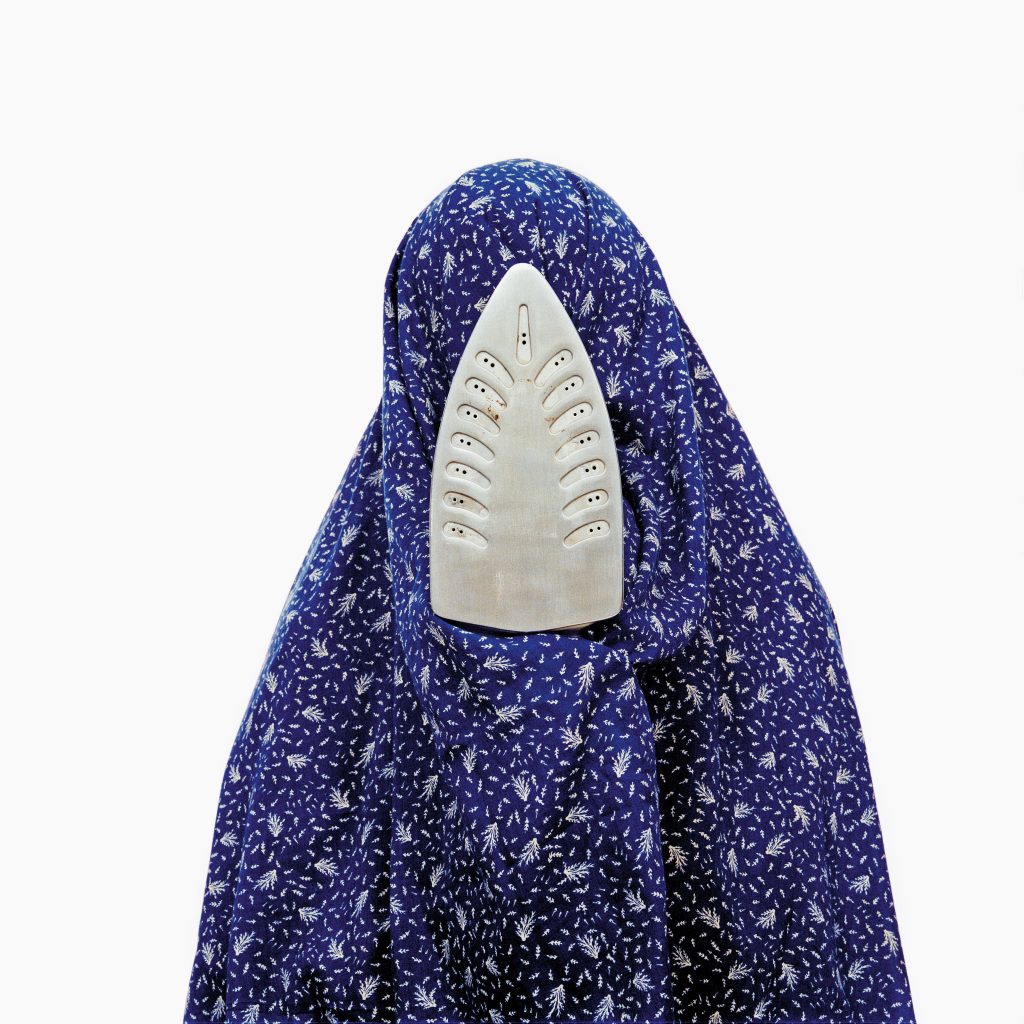

Leave a Reply